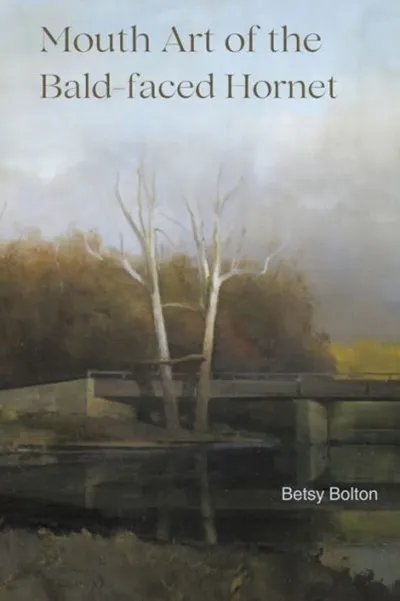Betsy Bolton’s New Book Confronts Mottled History and Beauty of the Crum

This summer at the National Humanities Center in North Carolina, Bolton began working on a book about 18th-century celebrity culture, and three women writers, including dramatist Joanna Baillie, who created works influenced by philosopher William Godwin.
Professor of English and Environmental Studies Betsy Bolton's new poetry book, Mouth Art of the Bald-faced Hornet, explores the intertwined human and natural histories of Crum Creek and its surrounding woods, from colonial times to present day.
Bolton blends contemporary reflections with historical accounts, contemplating how humans shape local environments. Her poems reveal the historical and ecological significance of the Crum Woods, which comprises the western border of Swarthmore’s campus and extends over more than 200 acres of land, including roughly 3.5 miles of hiking trails.
Bolton’s talent for navigating nuance and duality is evident throughout the book, as she touches on fairy tales, botany, and colonization. While describing the beauty and wonder of nature, Bolton confronts the environmental damage caused by human actions and discusses the violence and abuse that Europeans inflicted on the Lenape people when colonizing the area.
Throughout the pandemic, Bolton incorporated grounding practices into her teaching, emphasizing the importance of immersing in nature to cope with difficult times. The practices, such as storytelling, listening, and agro-ecology, aim to reconnect students with the earth and re-establish cultural values.

Cover art by Sara Lawrence-Lightfoot Professor of Art Randall Exon features both serene and realistic scenes from the Crum Woods. Exon, who has been teaching at Swarthmore since 1982, says evocation, rather than accuracy, is his primary goal as a realist painter.
"This collection of poems came out of the pandemic when I was one of the many people losing their minds,” she says. “I had to get up at 6 a.m. and go down to the Crum and visit with the beavers. That kept me sane."
"These years of beauty are also years of damage:
Baldwin locomotive, Boeing aircraft
cover the mouth of the Crum, gag the creek
with cement, heavy machinery, forgings,
tool steel, ship propellers, heavy castings, mining.
Decades now and still no idea
of thinking like a creek: the sand washes
downstream from the water treatment plant
no one can visit, not since 9/11.
Sewer lines, pipelines, train trestles criss-cross
the creek's length; shredders gorge on clear-cut trees;
explosives consume the hogback knoll that once ruled
the waters of the valley — till beavers return to
re-shape a landscape both familiar and forgotten.”“Natural history”
Bolton calls on readers to recognize, and refuse to look away from, the pollution and difficult “mottled history” that humans have caused in the Crum Woods. Bolton also celebrates the resilient landscape, inviting readers to commit to actions that preserve the ecosystem.
The book title, Mouth Art of the Bald-faced Hornet, which comes from a poem of the same title, celebrates the destructive, precise, and sophisticated design process of constructing nests. The hornets chew wood, then mix the wood fibers with saliva to create a pulp that becomes the walls of the nest. The exterior of a hornet's nest consists of paper-like layers, and inside are geometric combs with hexagonal cells.
“Our human ears are deaf to their mouth art,
those unspoken words woven into shelterabove our heads, orchestral swelling
of the supra-organism; the soloisthearing in the dark the harmonies she will shape
with mighty jaws: her many-faceted self, waitingto emerge.”
“Mouth Art of the Bald-faced Hornet,” lines 23-29



